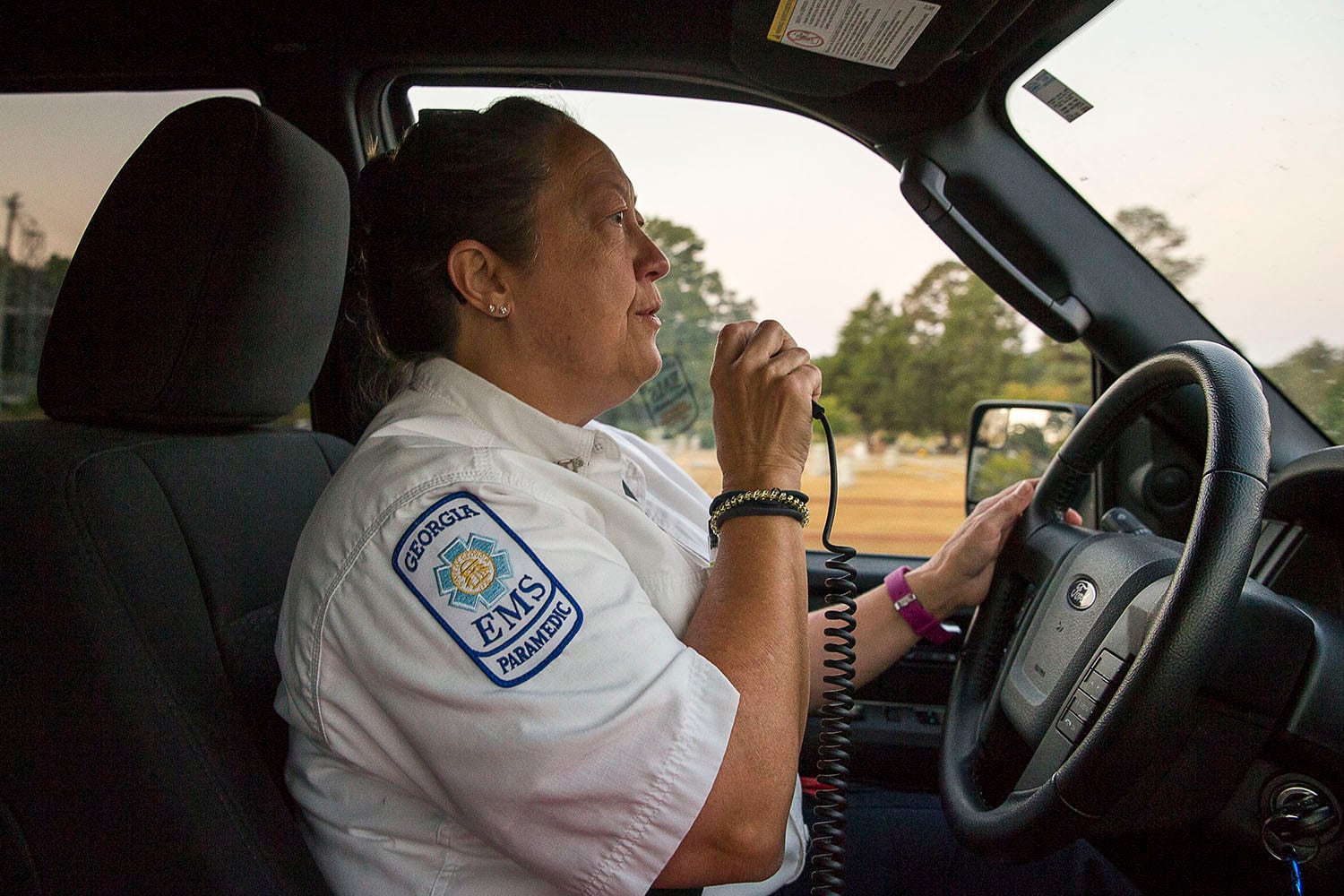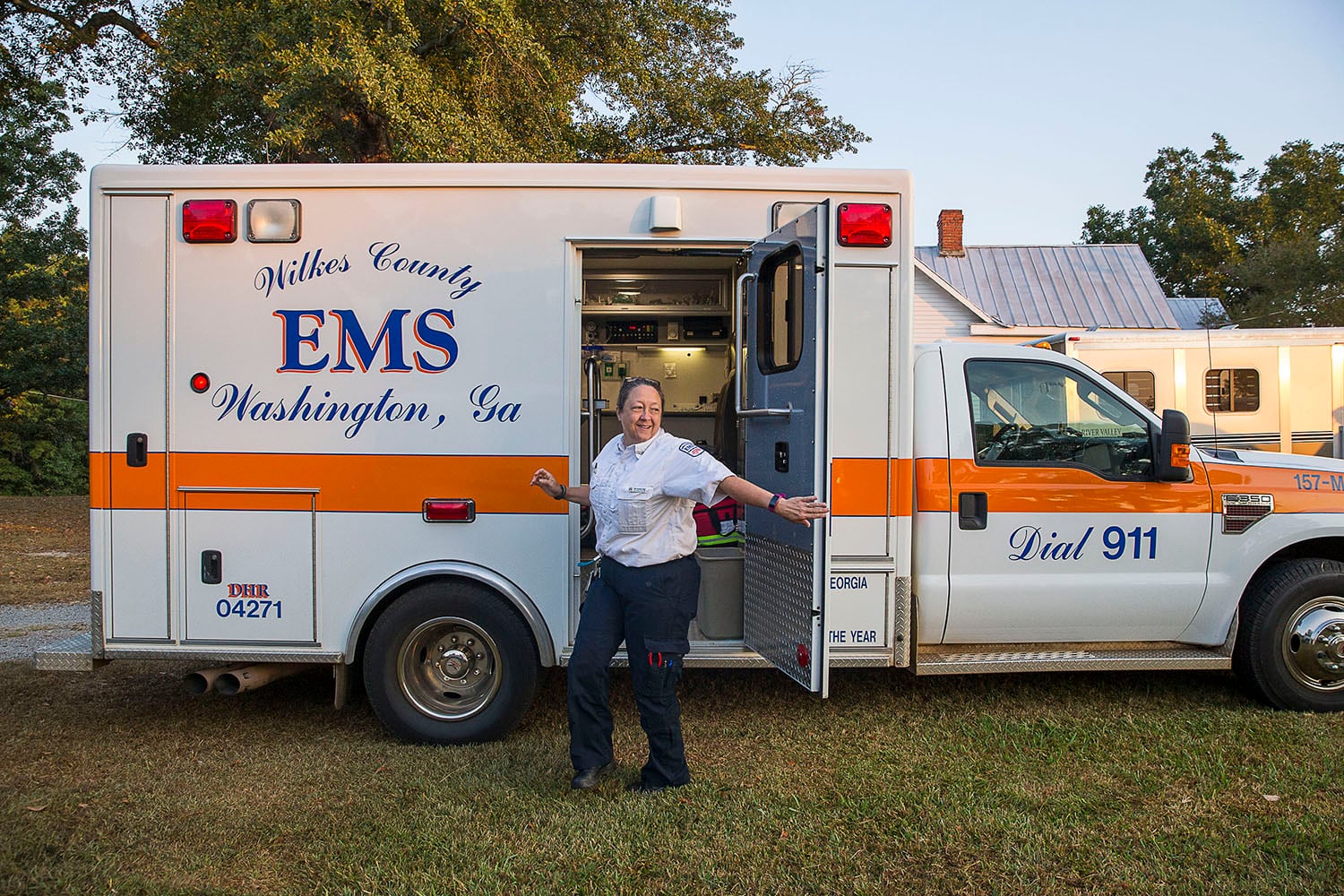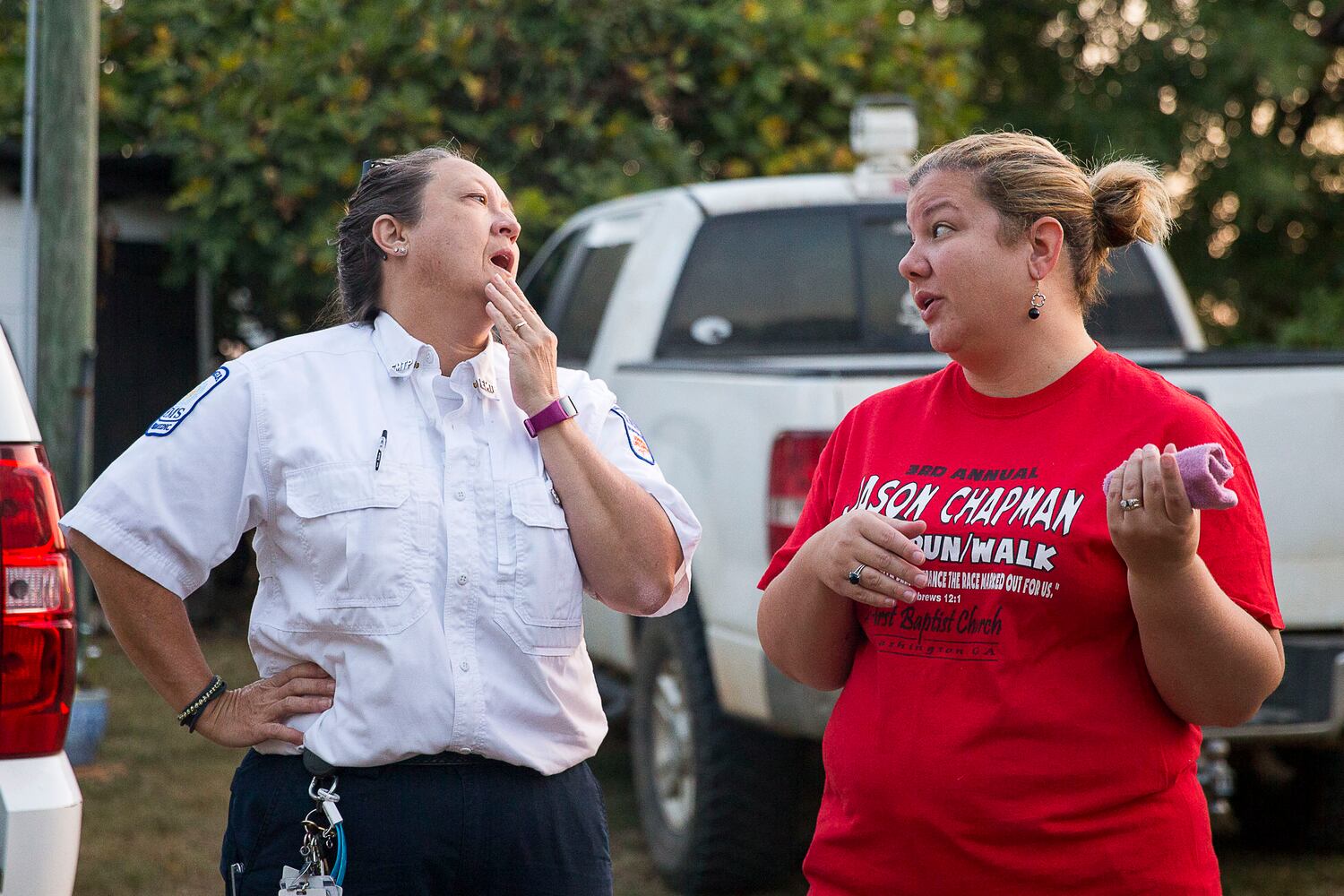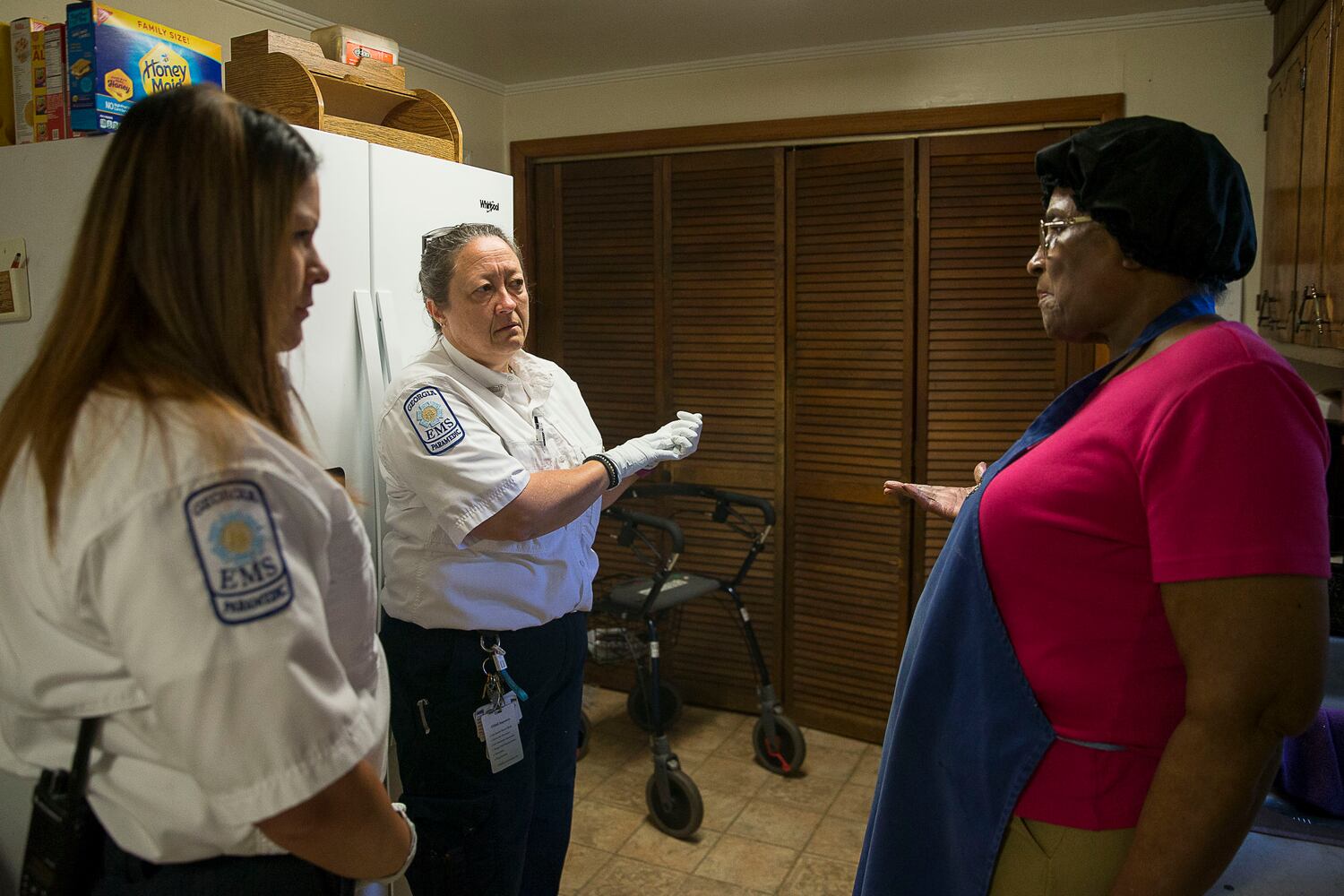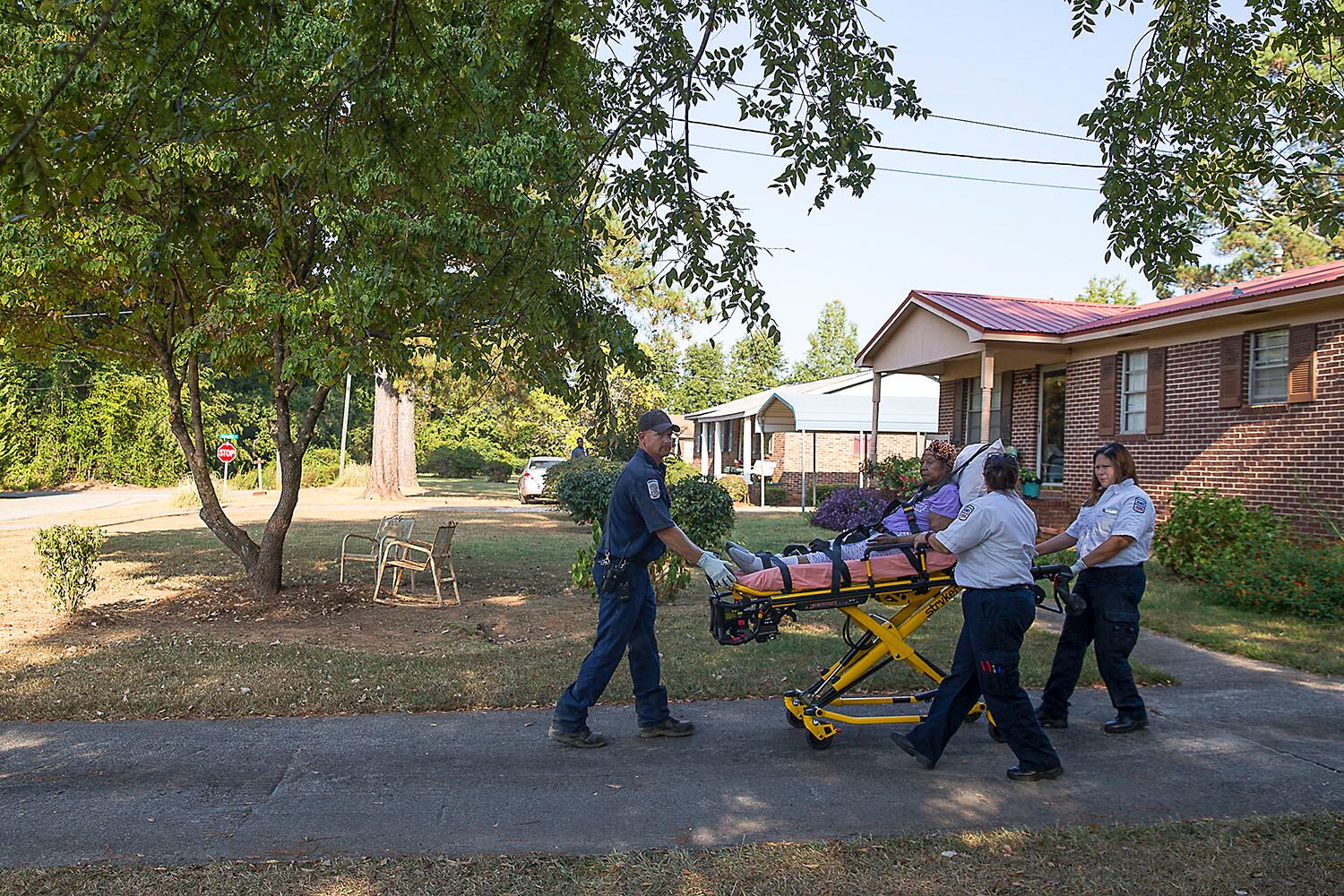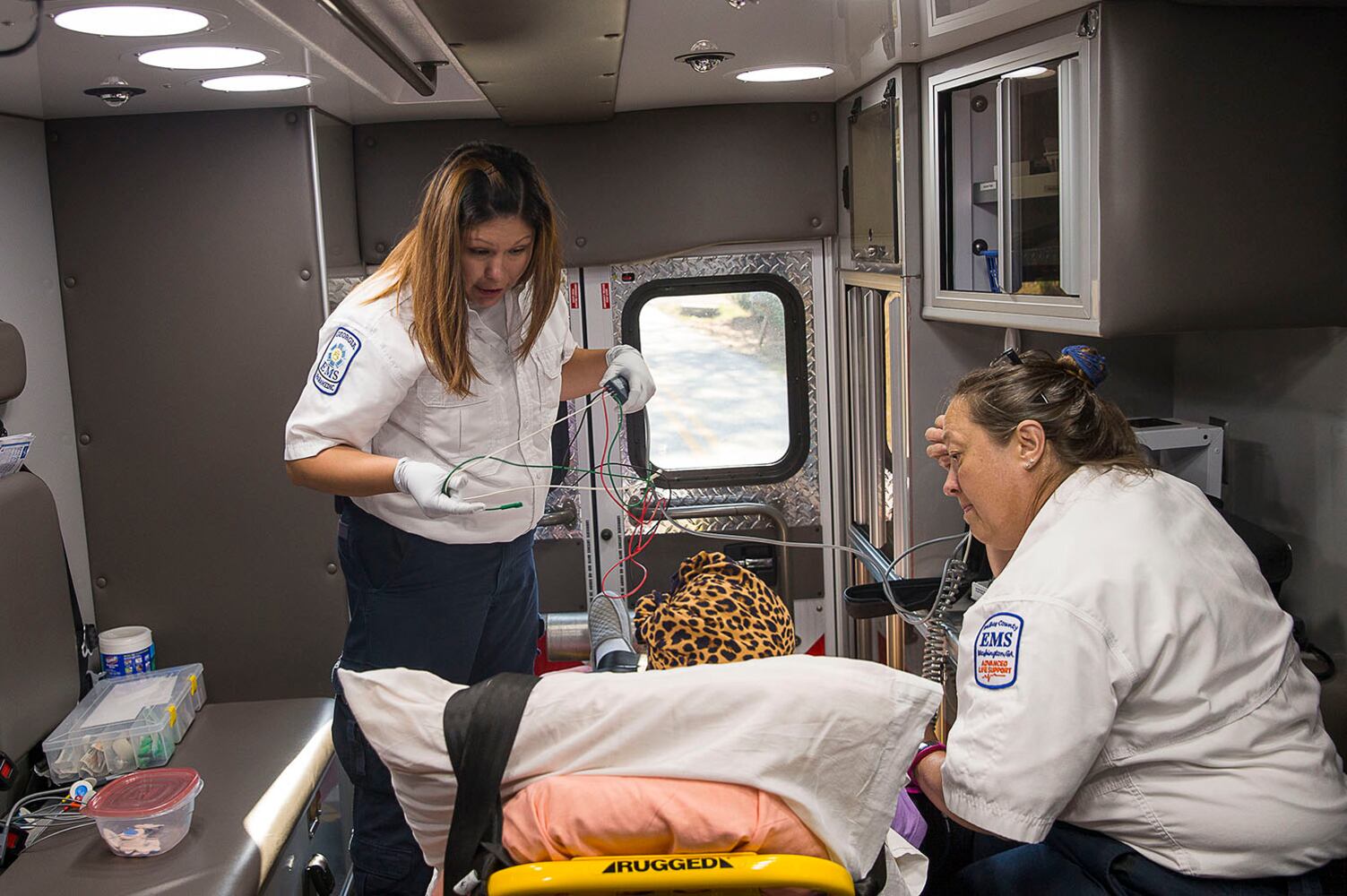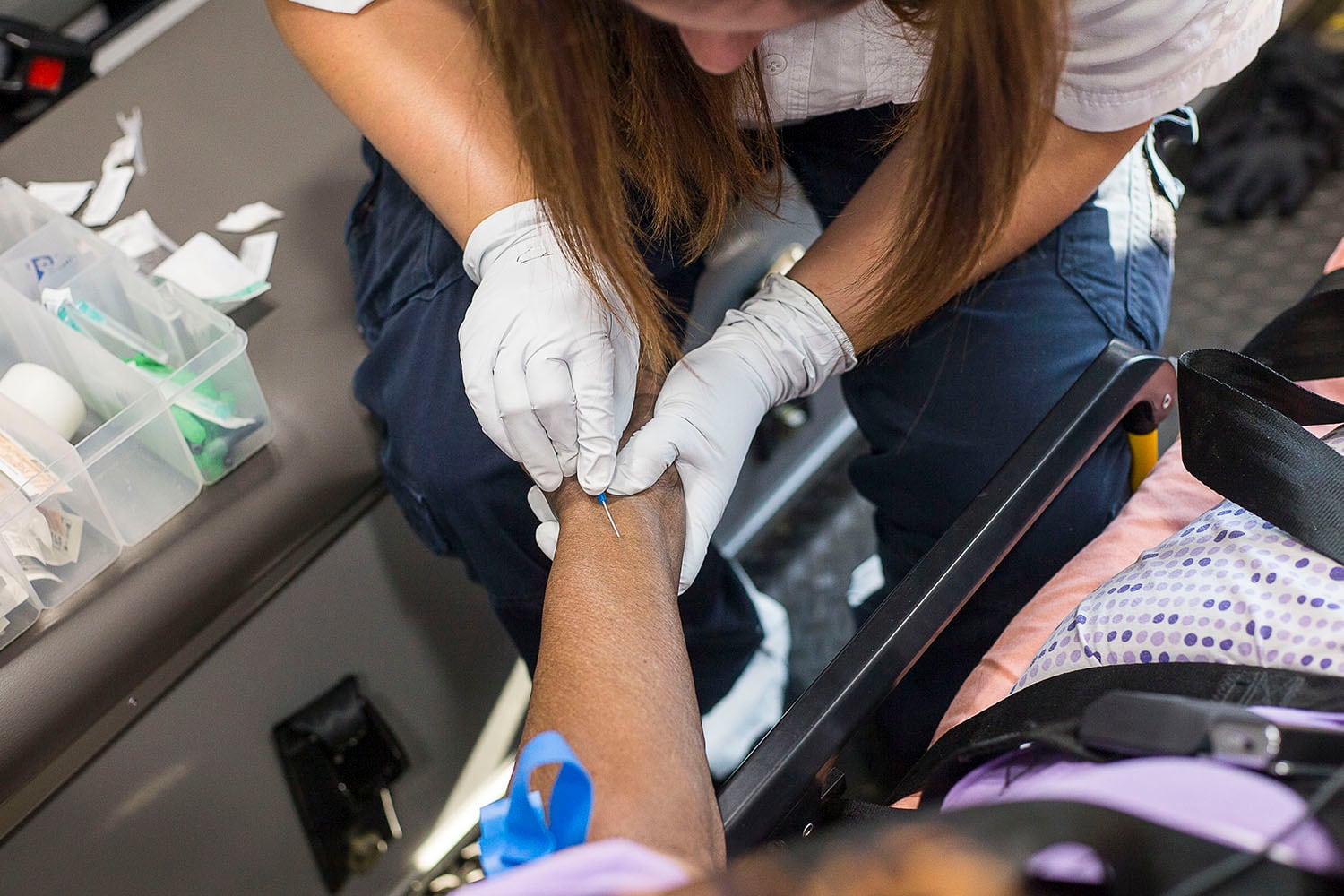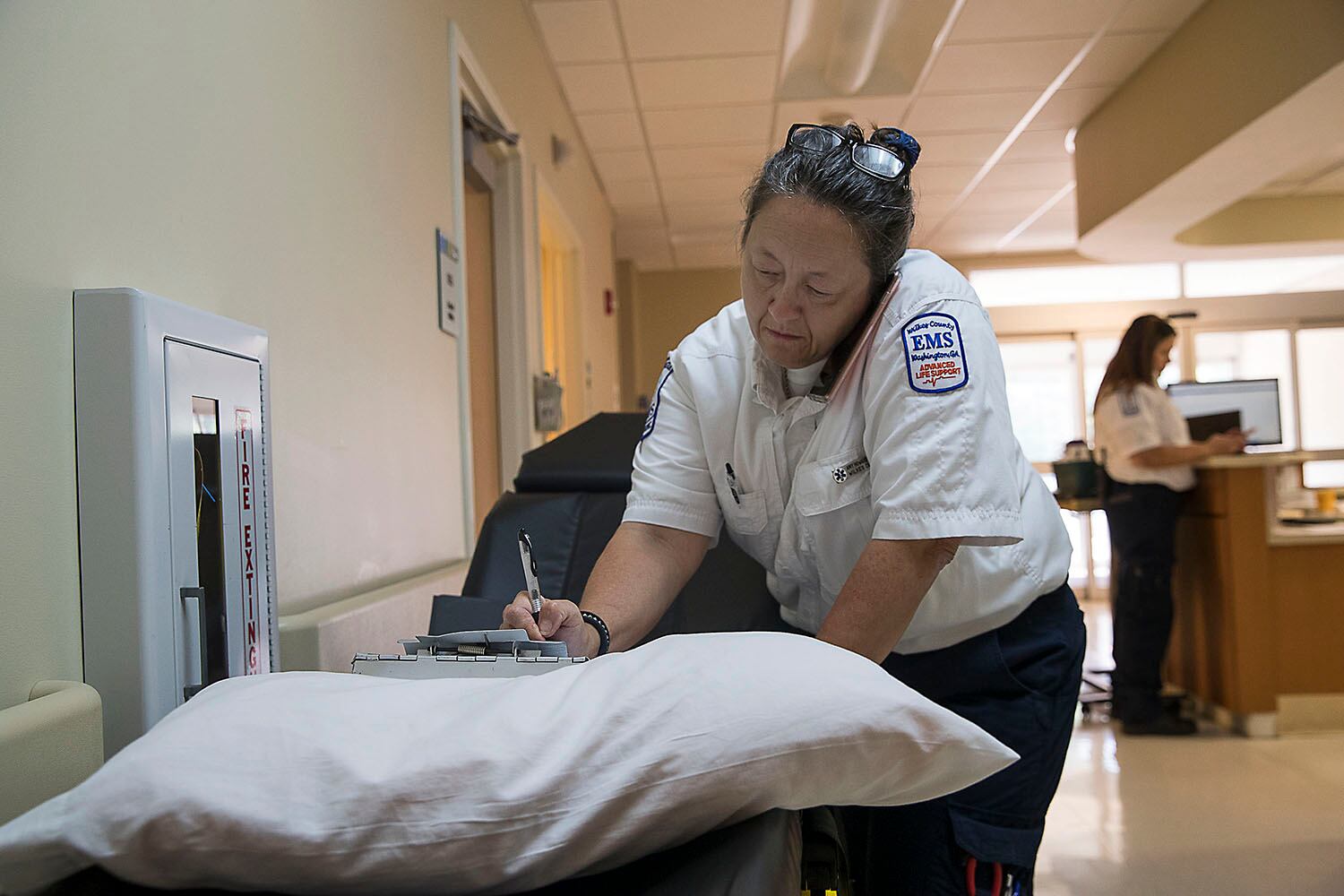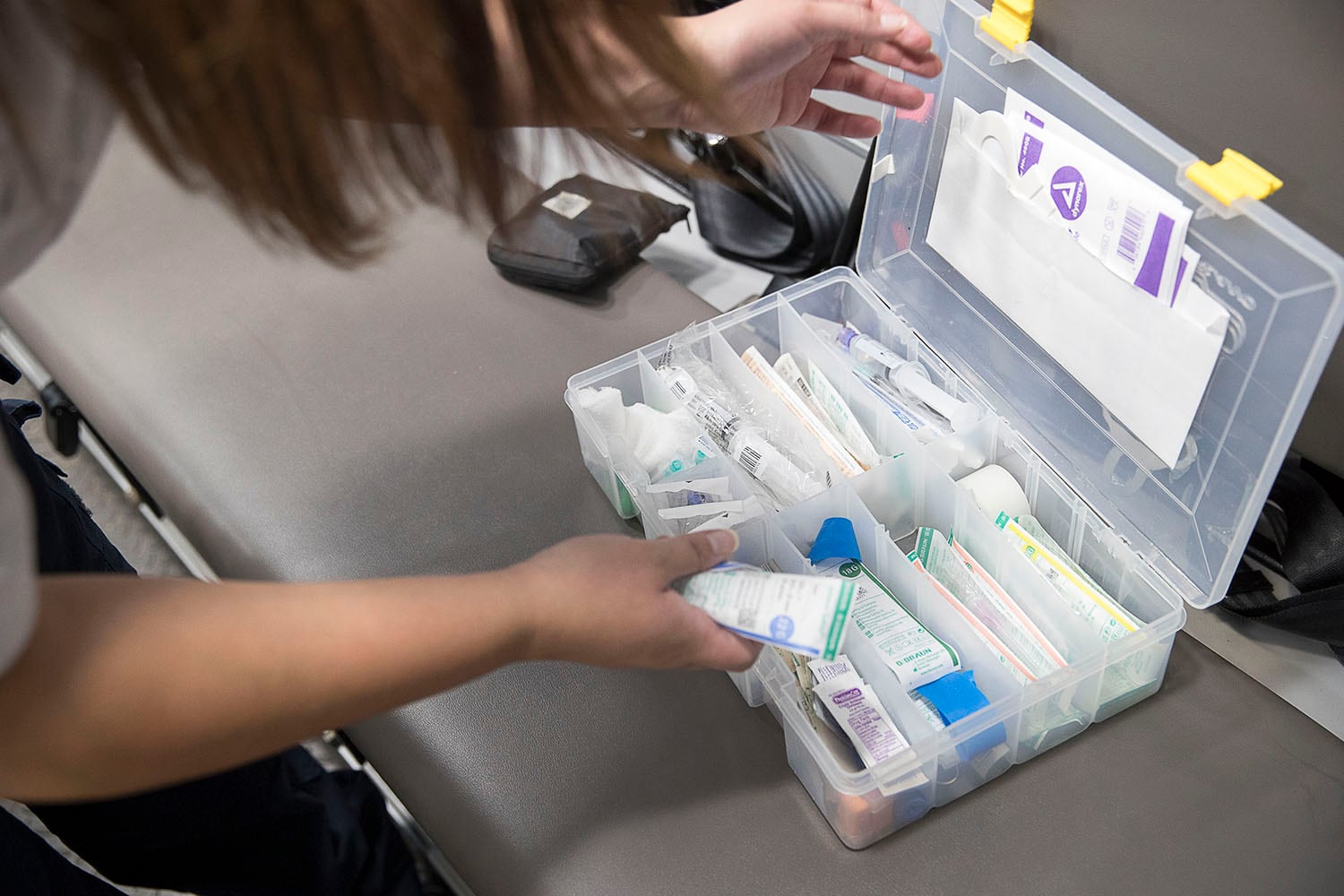Mickey Moore recalls leaving his bosses’ offices on Peachtree Street, just blocks from the state Capitol, in anguish.
Moore, then the deputy director of Georgia’s Office of Emergency Medical Services, had just lost his ability to enforce sanctions on ambulance providers and their medical personnel throughout the state.
A significant portion of a $2.37 million federal block grant that had supported the salaries of his strike team of inspectors, state training coordinators and support staff, was gone. In seconds, his office was decimated.
“You got to have more people than what we got,” Moore told the Atlanta Journal-Constitution, looking back on the cuts that took place six years ago. “This is people’s lives we’re talking about.”
Other on-and-off budget cuts over the years and lax enforcement further eroded the quality of emergency transport care, critics say. As a result, Georgians can't rest assured that their rush to the hospital will be in a vehicle that is safe and has the equipment and personnel that will provide them with the best chances of survival, an Atlanta Journal-Constitution examination found.
» RELATED: State has critical shortage of paramedics
» MORE: State lowers standard for ambulance staffing
» PHOTOS: Following a paramedic in Wilkes County
The safety of the vehicles is in question because the EMS office, a division of the Georgia Department of Public Health, isn't able to inspect ambulances often or enforce safety standards. Before the 2013 cuts, Moore said the EMS office found operators who ran ambulances with bungee chords to keep doors closed and swapped equipment between vehicles to try to duck a citation for lacking equipment required in each ambulance for life support. Those operators could face fines that could total tens of thousands of dollars a year.
Today, vehicle inspections are the responsibility of regional directors who also are the frontlines of complaint investigations and licensure renewals for thousands of medics and ambulance services across the state. Fines are rare, and the inspections may be limited to ensuring a vehicle has turn signals, lights and horns that work and that there’s a minimum of equipment on board, such as communication radios and defibrillators, several ambulance providers told the AJC.
"There is no test drive to see if it works,'' said Steve Vincent, chief operating officer of Gold Cross EMS in Augusta. "To me, if you're going to inspect a vehicle that's going to be transporting patients, they should be doing more than making sure it runs."
In addition, the EMS office doesn’t receive information on the increasing number of crashes involving ambulances in recent years, or know if an ambulance involved in a crash may have been returned to service on the next day, several EMS officials told the AJC.
Ambulance services may not even know if the medics they employ are properly licensed. The state is unable to alert providers about those who have lapsed, suspended or revoked licenses, E.J. Dailey, director for EMS Region 3, which covers metro Atlanta, told a room full of EMS officials at an August meeting.
A chorus of former and current local and state EMS leaders said the state moves have resulted in untenable situations for emergency crews and the public.
Courtney Terwilliger, a member of the Georgia Trauma Commission who is the EMS director for Emanuel County, said crews aren't getting the support and resources they need to serve the public. "My main frustration is that I know the capability of the men and women who work with us," he said. "We're just not using their talents and resources to improve the healthcare of our citizens to make the state a better place, all because we're not paying attention.
“As long as they cobble it together and somewhat make it work, it’s easy not to pay attention.”
» EARLIER COVERAGE: Politics and conflicts mire EMS service in Georgia
» RELATED: Long waits for ambulances erode public confidence in DeKalb
DPH spokeswoman Nancy Nydam said the office was not equipped with the technology to provide reports on the number of ambulances that have gone uninspected for more than 12 months. The department also could not readily provide a list of fines. When the AJC requested the data, it took the department two months to round up piecemeal information. The department said to obtain the data, staff had to manually review files for each provider to check if fines had been issued. After its review, it provided notifications of violations for four providers between 2011 and 2016.
David Newton, who was named the state's EMS director earlier this year, declined to meet with the AJC and would only answer questions submitted in writing.
Concerning the cuts in positions that had been funded through the federal block grant before 2013, he wrote that he did not have details on what happened because he wasn’t at the office then.
As far as the resources available for ambulance inspections, Newton wrote that the state has 10 regional directors who are responsible. In Atlanta, because of a concentration of vehicles, an additional part-time person helps out, Newton wrote.
“If a vehicle fails inspection, it is placed out of service by our office,” he wrote. The vehicle must pass a re-inspection before it can go back in service.
However, he said, “We have not routinely issued fines for a failed inspection.”
He also said a new licensing management system will soon allow EMS agencies to look at their rosters and see the expiration dates of the licenses of all their medics. The AJC repeatedly asked when that system would be in place, but DPH did not answer that question.
Asked if the EMS office will see cutbacks as a result of Governor Brian Kemp’s proposed budget, Newton said only that the EMS office, as with all programs in DPH, is subject to the governor’s budget guidelines.
‘Red-headed stepchild’
More than a decade ago, state lawmakers acknowledged a “severe crisis” affecting the EMS industry that could jeopardize the health and safety of everyone in Georgia. State senators on a study committee in 2007 pointed to severe staffing shortages, aged and outdated equipment and a lack of training programs, particularly in rural areas.
The committee also said that the EMS office was stuck in a government bureaucracy that “largely overlooked” its important duties. Among the changes the senators said were vital was making EMS a stand-alone office.
The study committee also supported stable and permanent funding for the office, so it could not only carry out its duties but also provide updated technological resources, program support and system development. In addition, the committee supported returning to ambulance providers a portion of their state licensing fees. That money could allow ambulance providers to repair ambulances, hire staff and meet state requirements.
Most of the committee’s recommendations were not adopted.
Blake Thompson, EMS director in Wilkes County, said that didn't surprise him.
“We are treated like the red-headed stepchild of the state of Georgia,” Thompson said.
Soon, the recession forced the state and regional EMS offices, like many state agencies, to operate on leaner budgets.
By 2010, the regional offices, which were responsible for regulatory monitoring and field operations, had lost much of their staffs, records show. That included training coordinators who were responsible for providing the latest developments in EMS to thousands of medics across the state.
David Loftin, who spent 30 years in a leadership role at state EMS Region 1, said he had to dig up old envelopes from trash bins to do his job and beg the ambulance providers he regulated to provide him with copy paper.
At various points during two rounds of cuts, Loftin said he worked up to 12 hours on weekdays and 10 hours on Saturdays just to keep up. Because state inspector positions had been cut, he had to conduct his own inspections of ambulances in his region. After he lost his training coordinator to the cuts, he was also in charge of training for the region.
So, after a day’s work, he taught evening courses for emergency medical technicians and paramedics that ran from 6 to 10 p.m. several nights a week, he said.
Loftin quit in 2011 after he was diagnosed with leukemia.
“I wondered to myself, what’s going to happen to me working all this time having to keep up,” he said. “What if the leukemia gets worse, there won’t be anybody to do all this stuff.”
At the state office during the height of the recession, Moore, the deputy director, inherited the job as the state’s licensing and compliance officer because there was no one else to do it.
In 2011, it appeared to Moore that some positions would be restored. The state EMS office that year received part of a federal block grant that paid for salaries of a strike team of inspectors and others who monitored ambulances and supported services.
The money didn’t last very long. In 2012, the office received half of what had been provided from the block grant, records show.
What rankled some was that a portion of the grant that EMS had received was shifted to a DPH wellness program. Moore said exercise equipment was moved into DPH headquarters. Nutritionists and fitness trainers took up space in conference rooms. Employees could devote a portion of their workday to exercise and receive nutrition counseling.
“People were literally dying or having a problem with ambulance service, and we were worried about how fit our employees were,” Moore said. “It irritated me so bad I couldn’t even see straight.”
Meanwhile, some ambulance services were flouting state rules. The state office discovered that one company over just a few months had violated ambulance staffing rules 278 times. Even after the office notified the provider of the violations, it short-staffed ambulances another 46 times.
In 2013, the state office had to lay off more than a dozen inspectors and others who provided oversight.
» RELATED: Ambulance delays continue to put south Fulton lives at risk
» FROM 2018: It takes longer for ambulances to respond in low-income areas, study finds
Moore said many jobs were combined, then later eliminated. Meanwhile, the lack of resources made simple tasks unmanageable.
The clerk who inputted the licensure applications of thousands of medics had to wait up to an hour for her laptop to boot up because it had so little memory, he said.
The office couldn’t buy postage because its policies required it to purchase supplies through a bidding process. New printers sat idle because the state had not included ink and ribbons in the purchase of the equipment.
Moore left in December 2013.
Overwhelming workload
In the ensuing years, Georgia didn’t take significant action to ensure adequate oversight.
While once the regional offices were staffed with at least three full-time employees — the director, the training coordinator and an administrative assistant — the offices until this year were stripped down to just a director. The state also ended funding for most office facilities, so the majority of the directors have to work from their homes. They also must rely on their own vehicles to cover areas that can span as many as two dozen counties.
Some at times work around the clock to keep up with their duties.
Besides inspecting vehicles, as leaders of emergency medical services for their region, directors conduct all the investigatory legwork about providers and medics who are the subject of complaints. That requires working in the field, often at odd hours, to question witnesses. The director is also responsible for ensuring that medics report any criminal charges that would put their licenses at risk, check their training records, hold quarterly meetings with local EMS officials and lead disaster drills.
Without administrative assistants, it fell to the directors to file investigation documents, answer phones, review letters and handle other clerical duties.
Their duties didn’t end there. Since training coordinators at the regions had been laid off, medics had to depend on the director to identify and provide thousands of hours of continuing education. The director also inherited responsibility for auditing and evaluating instructors and courses at EMS schools; establishing agreements with doctors to allow student access to surgical suites for clinical instruction; and certifying that medics who had completed the courses were ready to take the national skills and proficiency exam.
Earlier this year, the General Assembly restored funding for the 10 training coordinator positions. However, two of those positions, where starting pay is about $36,000, remain open, DPH said.
And the state hasn’t solved the larger issue of inadequate resources, EMS officials say.
Just a few weeks ago, Terwilliger, the Emanuel County EMS director, had a day when most of his vehicles were tied up for hours. One was running a patient with a life-threatening infection to Savannah. Another was rushing to Augusta to transport employees of a local power company who had suffered burns while working on a transformer. A third was in the nearby rural community of Dublin responding to a call. Another truck was in the shop for repairs.
If an emergency had struck, there would have been no ambulance to respond, he said.
Continuing coverage
Because of concerns about long waits for ambulances in some areas, the AJC last fall began examining EMS service in Georgia. Previous stories revealed that the Department of Public Health leaves it up to ambulance company officials to determine the quality of care provided by their medics and to investigate complaints, and that the agency rarely imposed sanctions. The AJC also found that vague state standards left the system for choosing ambulance providers vulnerable to political pressure and conflicts of interest.
For this story, to try to assess the impact of state budget cuts on the quality and reliability of emergency management services across the state, the AJC interviewed private and nonprofit ambulance providers, former and current top local and state EMS directors and legislators. The newspaper also reviewed documents and inspection reports involving the Office of Emergency Medical Services.
One challenge was tracking funding to an agency that has been overseen by three separate Georgia departments over the years: the Department of Human Resources, the Department of Community Health and the Department of Public Health. Oversight of paramedics also has changed: Years ago, the Georgia Medical Composite Board had responsibility. That job is now the duty of DPH.
Another challenge was obtaining information from DPH. The department asked the AJC to submit questions in writing and copy them to the state attorney general’s office, including questions about annual budgets and about ambulance inspection fines. The department estimated it would cost almost $1,200 for it to provide the AJC with a year-by-year breakdown of funds received by the state EMS office.
About the Author
Keep Reading
The Latest
Featured

